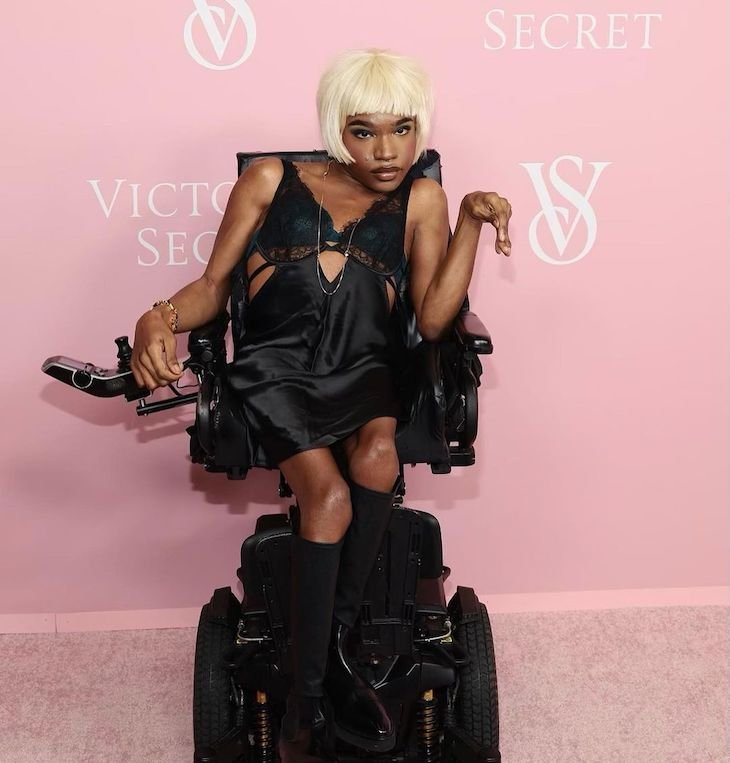The Revitalization of Modern Modeling
Image Courtesy: Instagram
Over the course of the recent haute couture seasons, you may have noticed a heightened sense of diversity and inclusion across models in many shows and shoots.
Whether top agencies, like IMG and Wilhelmina, are representing models of different body types or ethnicities, or spotlighting models with medical conditions like Type 1 diabetes, the modeling industry is surely not what it used to be. Nowadays, modeling isn’t solely about being tall and thin—rather, it has challenged the “norm” of what it used to be, and has evolved to be about laying the foundations for a more emphasized sense of representation.
Many high fashion brands have taken the steps to represent models of all sizes and body shapes in their shows, straying away from the “traditional” body standards of the modeling industry. In the Versace Spring/Summer show in 2021, for the first time, Donatella Versace featured Jill Kortleve, Alva Claire and Precious Lee, all of whom are three renowned plus-size models. Especially with Versace standing as one of the more eminent high fashion brands, its act of inclusivity has allowed many other plus-size models to book more couture shows, and in general, enhance their representation in the fashion industry. Other fashionable brands have also begun to implement size-inclusive clothing into their collections by carrying broader size ranges for their pieces. Furthermore, both of the brands, Miaou and Skims, hold sizes ranging from XXS to 4X in their clothing.
Over the years, brands within the industry have also placed a stronger emphasis on racial and ethnic representation of their models. For instance, many models of color, like Adut Akech and Anok Yai, are consistently featured in fashion week shows all over the world, increasing Black representation in an industry that holds limited opportunities for members of the BIPOC community. The Max Mara Fall 2017 show also featured Halima Aden, a Somali-American model and a former Miss Minnesota pageant contestant, who debuted in Milan wearing a hijab — an inspiration to other renowned brands, like Aalto and Off-White, who followed.
Image Courtesy: Instagram
The industry is also gradually becoming more inclusive with the transgender community. Top models, Alex Consani and Valentina Sampaio, regularly appear in couture shows and shoots. They are both symbolic of the revitalization of the industry, and continue to empower and inspire other members of the LGBTQIA+ community. In an aim to advocate against LGBTQIA+ hate, in 2021, Sampaio starred in the short film “Lambada Dyed Red White Blue '' where she is seen honoring the names of 34 transgender and nonconforming U.S. individuals who were killed as a result of anti-transgender violence. At the end of this film, she is depicted wearing a red, white, and blue dress that has been auctioned off as an NFT, with the funds going towards several LGBTQIA+ organizations. In addition, with Consani’s active presence on social media platforms, like TikTok and Instagram, she aims to increase the representation of the LGBTQIA+ community through her modeling career, and inspire her fans to continue to pursue what they love.
“Especially as a young trans girl, I always saw the lack of representation, and wanted to fill the void and show other trans and non-binary people that it was beautiful to be trans—not something to be ashamed of,” said Consani in a Vogue interview.
The industry has advanced towards representing models with disabilities. Aaron Rose Philip, an Antiguan-American model who was born with cerebral palsy, debuted her runway career in the Moschino Spring/Summer 2022 ready-to-wear show, ultimately a revolutionary symbol of representation for the Black transgender disabled community. “If I’m going to be a model, I’m going to be present with my disability in this industry because I’m allowed to be here,” said Philip to Vogue.
With its constant change and acts of representation there are now no strict and inflexible standards that constitute the modeling industry. Although the industry hasn’t yet achieved full equity and diversity, brands and agencies are implementing great starting points for the anticipated permanent and abiding revitalization of the industry.
Strike Out,
Writer: Rachel Yu
Editor: Annika Chaves
Boston


